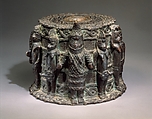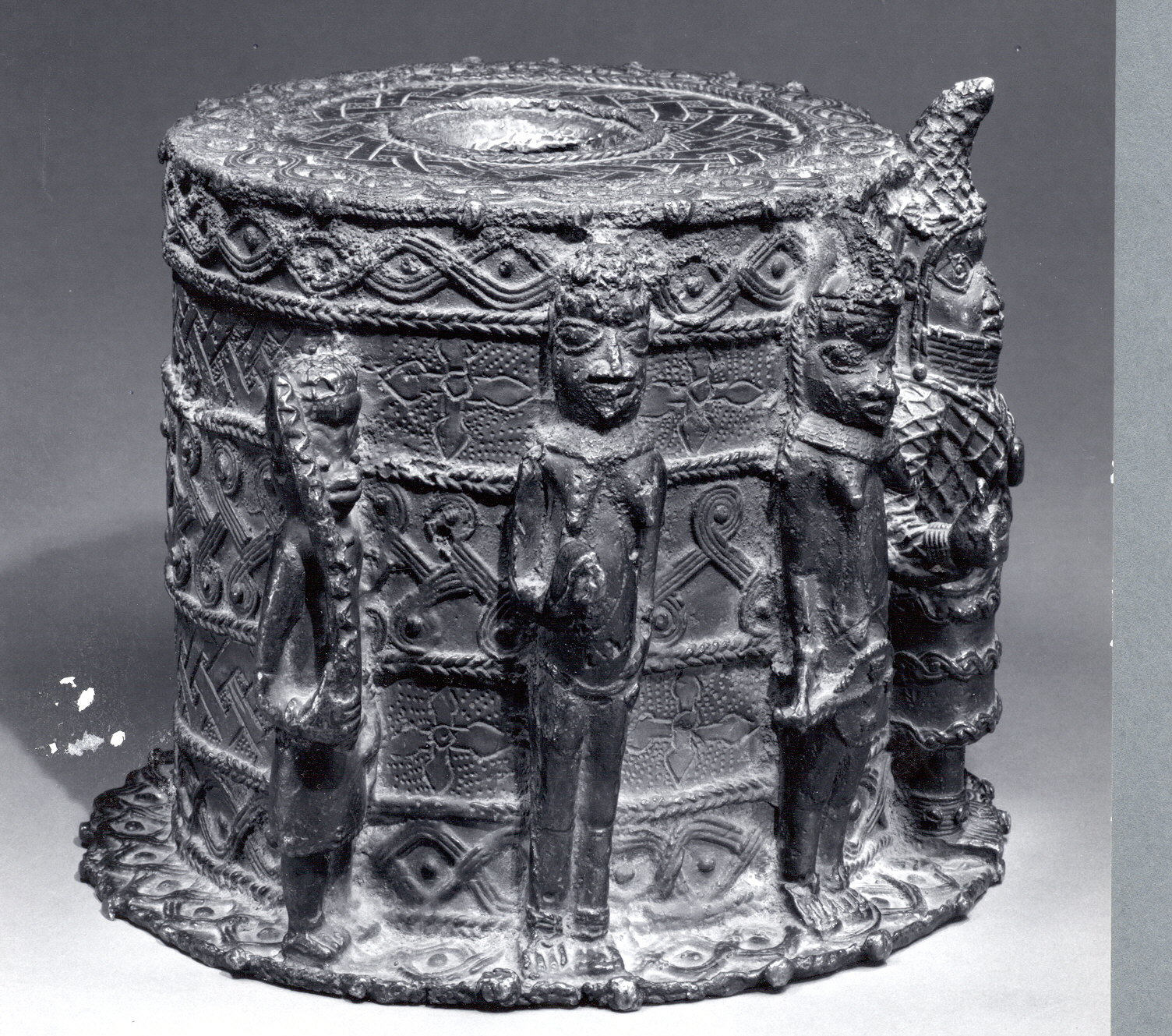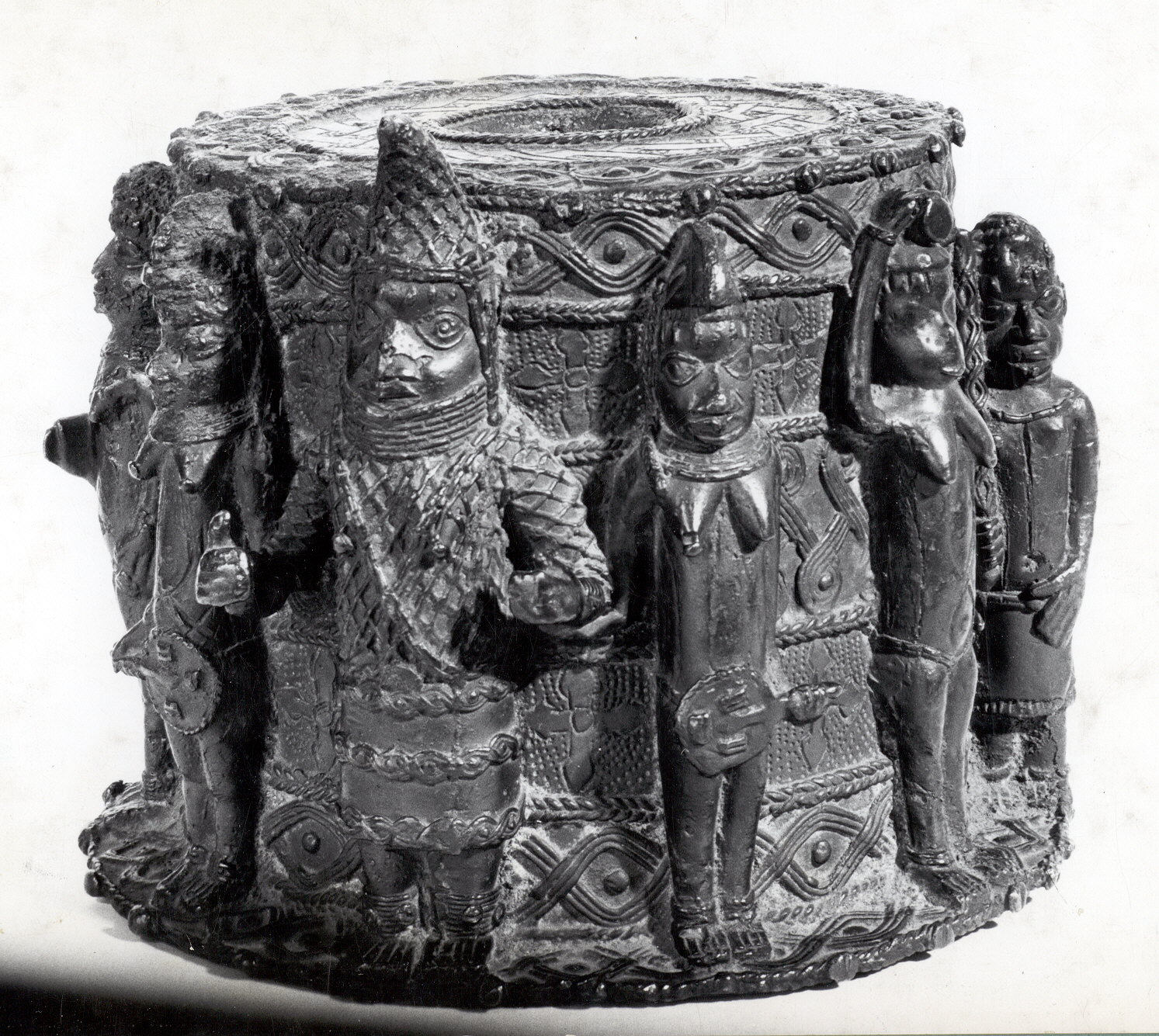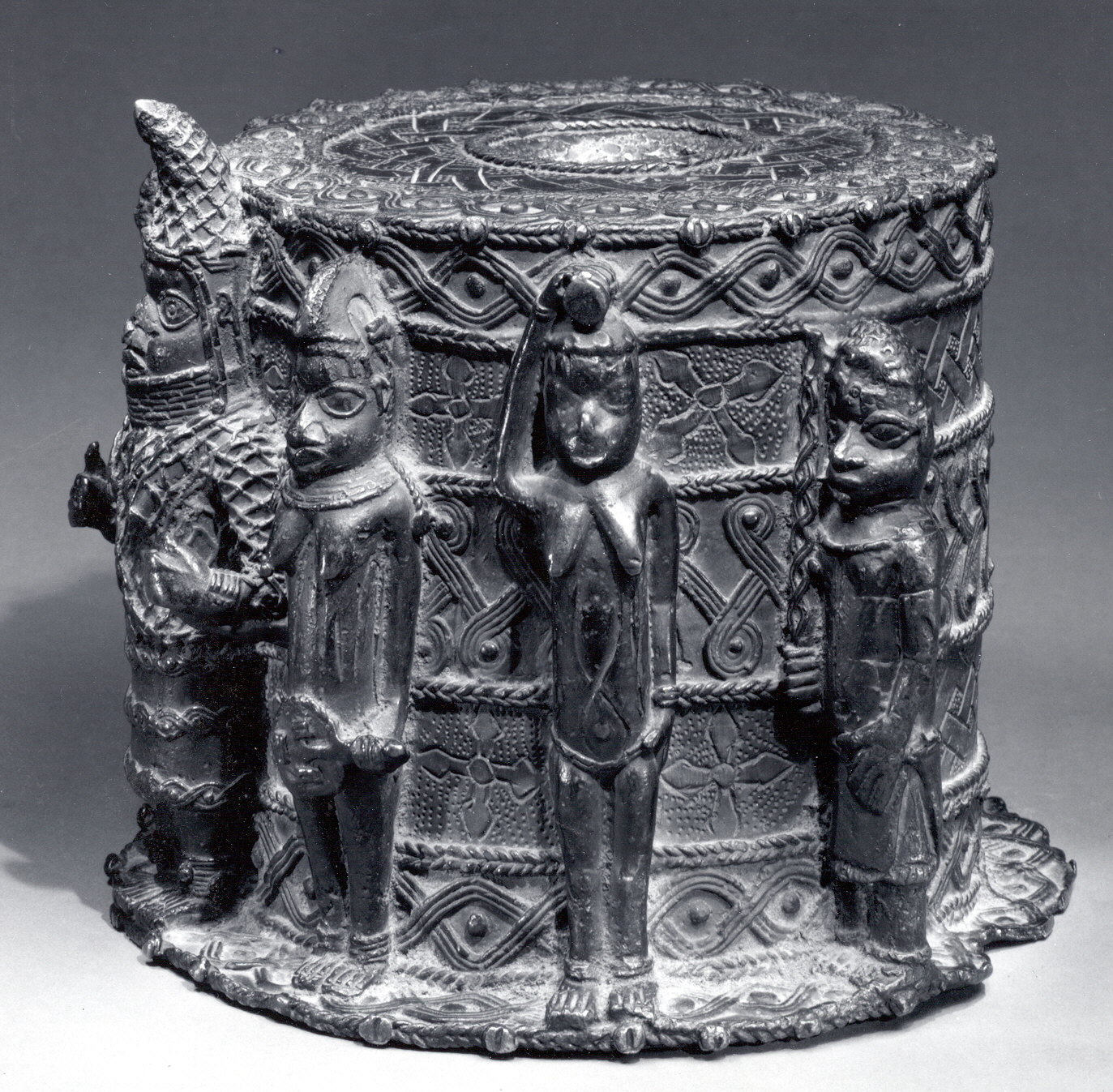Altar to the Hand (Ikegobo)
Not on view
In the royal kingdom of Benin, cylindrical "altars to the hand," or ikegobo, are created to celebrate a person's accomplishments and successes. Ikegobo are dedicated to the hand, the aspect of an individual's being associated with action and the initiation of change which is at the root of one's achievements. Depending on a patron's wealth and place within the hierarchy of the kingdom, these objects are made of brass, wood, or clay.
This cast brass ikegobo was created for an iyoba, the mother of the king. Because of her position, the queen mother enjoyed many of the privileges accorded to high-ranking men, including the right to commission personal and ritual objects from brass, a costly material strictly regulated by the king. As in other examples of Benin royal sculpture, scale and courtly regalia are used to denote rank and importance. The iyoba is recognized immediately by her size and the full complement of coral bead accoutrements associated with her position: the distinctive peaked crown, high collar, netted shirt, and crossed bandoliers. She is flanked by two female fan-bearers who support her arms, a position also assumed by the king when appearing in state. Two other female attendants carry containers, perhaps holding items of tribute, above their heads. Beyond them a pair of male servants, clad in cloth wrappers, hold staffs. The seven figures are superimposed onto a background of alternating bands patterned with floral, braid, and interlace designs. An opening at the top of the altar receives a carved ivory tusk.
Their relative nudity and distinctive crested hairstyles identify the female attendants as women specially raised in the palace by the iyoba herself. These women, highly respected for their refinement and education, will become the wives of the king or may be given in marriage to cement political alliances with important chiefs.
Due to rights restrictions, this image cannot be enlarged, viewed at full screen, or downloaded.
This artwork is meant to be viewed from right to left. Scroll left to view more.





